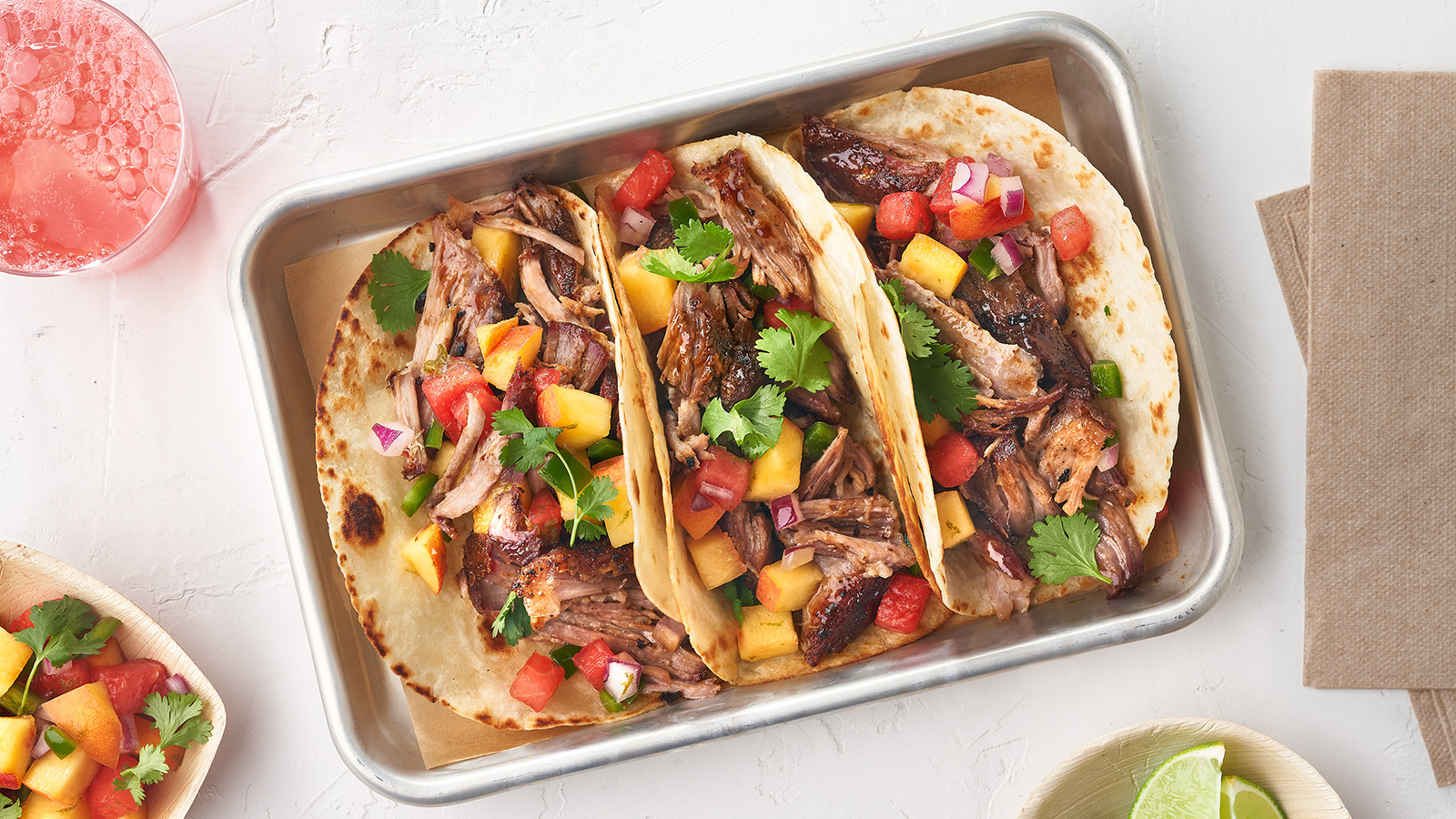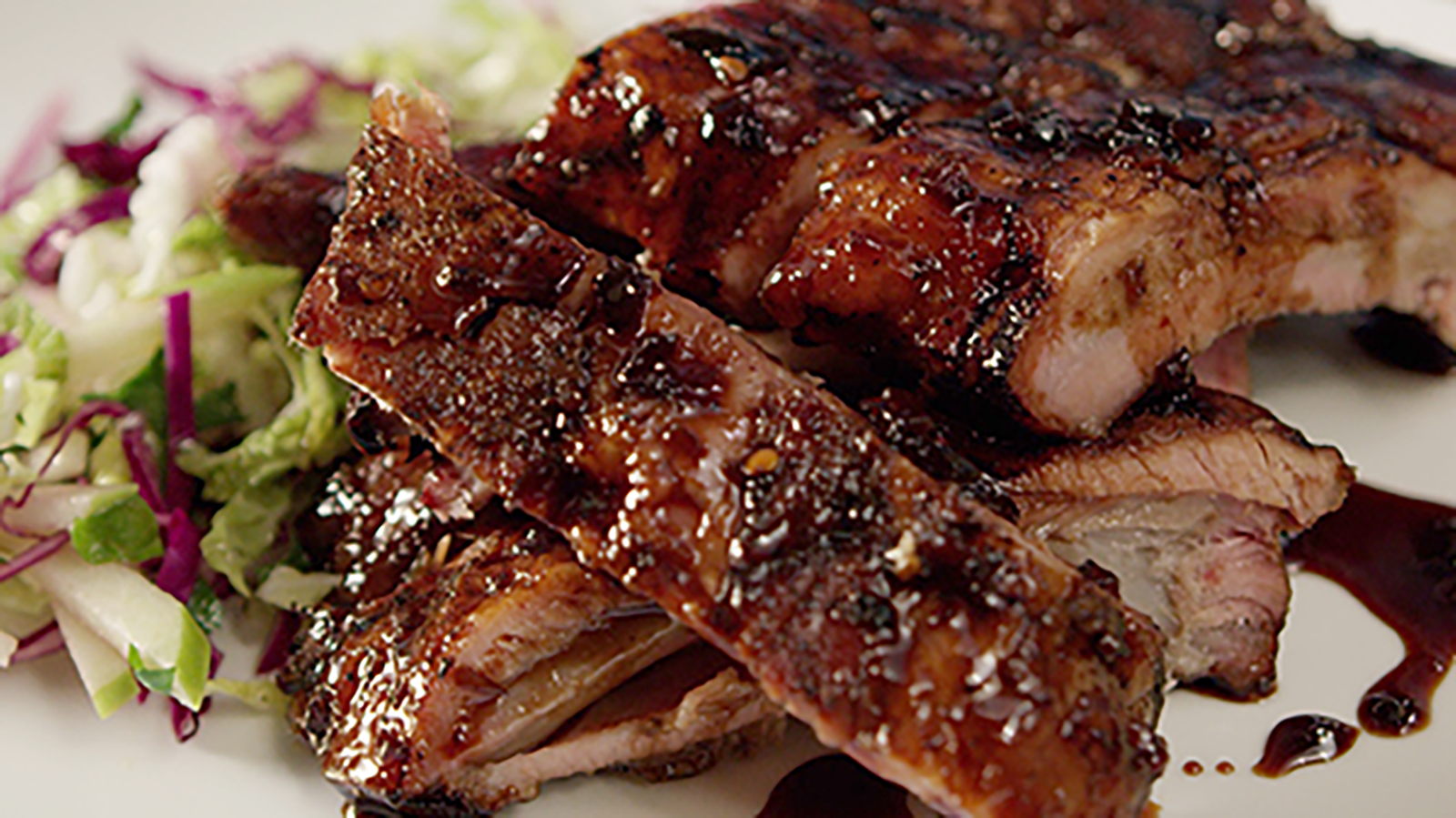.jpg?width=752&height=501&name=rachel-bramlett-aBOisV4hnOY-unsplash%20(1).jpg)
American-style barbecue is a culinary tradition deeply embedded in the cultural fabric of the United States. It’s a cuisine that reflects the nation’s history of immigration, colonialism and regional diversity.
From the slow-smoked brisket of Texas to the tangy pulled pork of the Carolinas, each region boasts its own unique style, techniques and flavors.
Kansas City Barbecue: Sweet and Smoky
Kansas City, Missouri, is synonymous with barbecue. According to Datassential, 43% of consumers are interested in trying Kansas City-style barbecue.1
CHICORY RUBBED PORK BUTT WITH BOURBON BBQ SAUCE
One of the defining features of Kansas City-style barbecue is the sauce. The tomato-based, burnt-red sauce is thick and sticky, with a distinctive smoky flavor that comes from molasses and liquid smoke. The meat is then smoked low and slow over hickory wood, adding to the rich flavor. The slow cook also helps prevent charring and blackening meats.
However, burnt ends, the flavorful crusty edges of smoked brisket, are a beloved delicacy in Kansas City barbecue joints. They are projected to grow 68% on menus over the next 4 years.1
In addition to brisket, the region is marked by its variety of meats, from whole chickens to pork ribs. Kansas City mainstay Jones Bar-B-Q features ham, pork, burnt ends, ribs, sausage and rib tips on their menu.
Carolina Barbecue: Tangy and Vinegary
While barbecue in the Carolinas emphasizes pork, there are distinctive styles across the region.
In Eastern Carolina, whole hog barbecue is the centerpiece. It’s slow-roasted over wood for hours until tender. Mop sauce, which is a thin liquid sauce brushed onto the meat while it cooks, keeps the three sources of meat—stomach, neck and shoulders—tender. The meat is then pulled and served with a slightly spicy, tangy and sweet vinegar-based sauce, highlighting the region’s preference for sharp, acidic flavors.
In Western Carolina-style barbecue, also known as Lexington-style, pork shoulder is the primary cut, slow-cooked and smothered in a tomato-based sauce with a sweeter profile.
Another highlight is Carolina Gold, a mustard-based sauce typically served over pork and defined by its yellow color and acidic punch. A legacy left from the German settlers in the area, Carolina Gold Sauce is projected to grow 68% on menus over the next four years, according to Datassential.2
Texas Barbecue: Low and Slow
Everything is bigger in Texas, including the variety of barbecue styles.
Central Texas barbecue emphasizes simple seasoning and slow smoking, allowing the quality of the meat to shine. Smoking is so vital to the culture that Austin-based pitmaster Aaron Franklin won a James Beard award. At Franklin Barbecue, which was called the “best barbecue in America” by Bon Appetit, the menu features brisket, pork spare ribs, pulled pork and more by the pound.
East Texas features a sweeter, tomato-based sauce, which is served with the popular chopped pork and beef sandwiches. Smoked sausages, or “hot links,” are also common, such as Doc’s Hot Links, founded in 1969. According to Datassential, 45% of consumers are interested in trying East Texas-Style BBQ.1
Look to South Texas barbecue for Mexican influences, such as barbacoa-style cooking methods. For example, Mansfield-based Del Toro BBQ combines Mexican and Texan cuisine to create what Chef Nico Sanchez calls “Mexi-Que.” The restaurant features dishes like birria tacos and a brisket tostada.
Finally, West Texas barbecue, sometimes called “cowboy style,” is characterized by direct heat and mesquite wood, resembling grilling more than traditional smoking. The faster cooking style is perfect for thinner cuts of meat, including sausage, ribs and chops.
Memphis Barbecue: Dry Rubs and Slow Smoking
Memphis barbecue is all about pork, with ribs, shoulder, butt and pulled pork sandwiches taking center stage.
For ribs in Memphis, wet or dry is the critical question. Dry ribs are coated in a blend of spices like paprika, garlic powder and brown sugar that’s generously applied to the meat before smoking, infusing it with layers of flavor. The ribs are slow-cooked to perfection and then served with a tangy tomato-based sauce on the side. Wet ribs are brushed with a thin, ketchup-based sauce before, during and after smoking them.
Another common dish is pork shoulder that’s slow-smoked, pulled and served with sauce on the side or as a pulled pork sandwich with coleslaw. Speaking of sauce, Memphis-style barbecue sauce is ketchup-based and typically includes brown sugar, cayenne pepper, white vinegar, yellow mustard and Worcestershire sauce.
Alabama, St. Louis and More
While Kansas City, Memphis, Carolina and Texas barbecue are often considered the big four, several other regional American styles have claims to fame.
- Alabama white sauce is unique given its creamy, mayonnaise base and tangy vinegar feel. Created in the 1920s by Big Bob Gibson Bar-B-Q in Decatur, Alabama, the on-trend sauce (projected to grow 88% over the next four years2) is typically served with barbecue and used in coleslaw and potato salad.
- Kentucky is distinguished by its meat. The region is known for slow-cooking mutton with a Worcestershire-based sauce.
- St. Louis is differentiated by its cut of meat, with pork spare ribs being called “St. Louis ribs.”
Tips for Creating Authentic Barbecue Dishes
Use the right wood: Each barbecue style has its preferred type of wood for smoking. For example, Kansas City-style barbecue is typically smoked over hickory wood, while Texas-style barbecue is smoked over oak wood.
Don’t skimp on the seasoning: Whether using a dry rub or a sauce, use plenty of seasoning to give your meat that authentic barbecue flavor.
Cook low and slow: To achieve tender, juicy meat, cook it low and slow over a period of several hours.
Experiment with different cuts of meat: While each style of barbecue has its preferred cuts of meat, don’t be afraid to experiment with different cuts to find what works best for your menu. For example, consider making crackling or kebabs from the pork belly. Or, how about a “pig wing” glazed in delicious barbecue sauce? There’s also pork jowl, which is commonly featured in Korean barbecue, making it ripe for a U.S. interpretation.
For more barbecue insights, check out the following resources:
- What’s New in BBQ Infographic
- Global BBQ Trending Flavors & Preparations Article
- Pork and Bacon Trends Infographic
- Fire Up the ‘Cue Article
Sources
1 “What’s New in ‘Cue: Fire Up the Future of BBQ,” Creative Concepts, Datassential Trendspotting, Vol. 96, August 2022
2 Datassential SNAP!

.jpg?width=1600&height=900&name=Chicory-Rubbed-Pork-Shoulder-1-scaled-e1657030893341%20(1).jpg)



